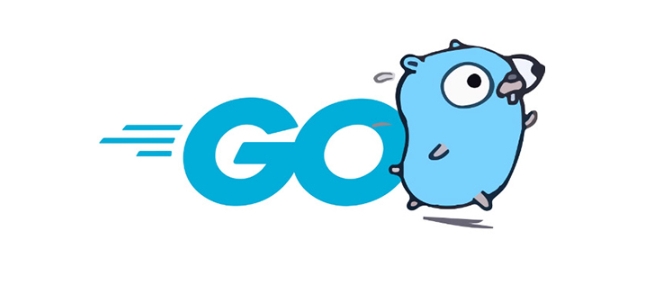 Backend Development
Backend Development
 Golang
Golang
 How Go's Channel-Based Concurrency Simplifies Parallel Programming Compared to Python's Locks
How Go's Channel-Based Concurrency Simplifies Parallel Programming Compared to Python's Locks
How Go's Channel-Based Concurrency Simplifies Parallel Programming Compared to Python's Locks
Jul 03, 2025 am 01:21 AMGo's concurrency model is more concise and efficient because the CSP model using channel avoids explicit locking, supports clear task collaboration mode, and Goroutine Channel combination is lightweight and efficient. 1. Go's channel is naturally thread-safe, automatically blocking sending/receiving operations, and does not need to use locks to protect shared variables like Python. 2. Channel can naturally express concurrent patterns such as producer-consumer, and have clear structures, while Python often requires mechanisms such as mixed locks and conditional variables. 3. goroutine is a user-state thread, which has low switching overhead and is easy to achieve high concurrency and high efficiency with channel. In contrast, Python threads are limited by GIL and have high process communication costs.

Go's concurrency model is indeed more concise and efficient than Python's concurrency method using locks in many scenarios. The core reason is that Go natively supports channel-based CSP (Communicating Sequential Processes) concurrency model, while Python relies more on shared memory and lock mechanisms to manage concurrent state, which can easily cause problems such as race and deadlock.

Let’s take a look at why Go’s channel is easier to use and safer in parallel programming from a few practical perspectives.

1. Channel avoids the need for explicit locking
When handling concurrency in Python, threading.Lock or multiprocessing.Lock is often used to protect shared resources. For example:
lock = threading.Lock()
counter = 0
def increment():
Global counter
with lock:
counter = 1Although this approach is effective, it is prone to errors once the logic becomes complex, such as multiple variables need to be synchronized and cross-thread communication is frequent. Moreover, poor granularity control of the lock will lead to performance bottlenecks or deadlocks.

Go encourages the delivery of data through channels rather than sharing data. for example:
ch := make(chan int)
go func() {
ch <- 42 // Send data}()
fmt.Println(<-ch) // Receive dataThe channel itself is thread-safe, and sending and receiving operations will automatically block until the other party is ready. This method naturally avoids the problem of shared variables, and saves the trouble of manually adding locks.
2. Channel supports clear task collaboration mode
Python's concurrent code usually uses mechanisms such as locks, conditional variables, queues, etc., and the structure is prone to become chaotic. For example, you may want to use queue.Queue and threading.Condition to coordinate the workflow of multiple threads at the same time.
Go's channel can express common concurrency patterns such as "producer-consumer" and "task distribution" very naturally. For example:
func worker(id int, jobs <-chan int, results chan<- int) {
for j := range jobs {
fmt.Println("worker", id, "processing job", j)
results <- j * 2
}
}
func main() {
jobs := make(chan int, 100)
results := make(chan int, 100)
for w := 1; w <= 3; w {
go worker(w, jobs, results)
}
for j := 1; j <= 5; j {
jobs <- j
}
close(jobs)
for a := 1; a <= 5; a {
<-results
}
}This code creates three workers to execute tasks concurrently, with clear structure and clear logic. Multi-goroutine collaboration is possible without additional locking.
3. Go's Goroutine Channel combination is lightweight and efficient
Python's threads are essentially limited by GIL (global interpreter lock) and cannot truly perform CPU-intensive tasks in parallel. Even if the multiprocessing module is used, the communication cost between processes is relatively high.
Go's goroutine is a user-state thread, with minimal overhead of creation and switching. In addition to the efficient communication mechanism of channel, writing highly concurrent programs is simpler and more efficient. For example, starting thousands of goroutine processing tasks is a common practice in Go, but it is almost impossible to do so in Python.
To give a small example:
If you want to download multiple web content concurrently, you can write it in Go like this:
func fetch(url string, ch chan<- string) {
resp, _ := http.Get(url)
ch <- resp.Status
}
func main() {
urls := []string{"http://example.com", "http://example.org", ...}
ch := make(chan string)
for _, url := range urls {
go fetch(url, ch)
}
for range urls {
fmt.Println(<-ch)
}
} This code is simple and clear, and each request is executed in an independent goroutine, and the result is returned through the channel. If you change to Python, you need to use concurrent.futures.ThreadPoolExecutor or asyncio to achieve similar effects, and the code complexity has increased significantly.
Basically that's it. Go's channel is indeed not omnipotent. In some scenarios, tools in mutex or sync packages are still needed. But in most daily concurrent tasks, it provides a more intuitive and safer way to organize your code. In contrast, Python's lock mechanism is flexible, but it is more prone to errors when used, especially in complex business logic.
The above is the detailed content of How Go's Channel-Based Concurrency Simplifies Parallel Programming Compared to Python's Locks. For more information, please follow other related articles on the PHP Chinese website!

Hot AI Tools

Undress AI Tool
Undress images for free

Undresser.AI Undress
AI-powered app for creating realistic nude photos

AI Clothes Remover
Online AI tool for removing clothes from photos.

Clothoff.io
AI clothes remover

Video Face Swap
Swap faces in any video effortlessly with our completely free AI face swap tool!

Hot Article

Hot Tools

Notepad++7.3.1
Easy-to-use and free code editor

SublimeText3 Chinese version
Chinese version, very easy to use

Zend Studio 13.0.1
Powerful PHP integrated development environment

Dreamweaver CS6
Visual web development tools

SublimeText3 Mac version
God-level code editing software (SublimeText3)
 How to use the concurrent function in Go language to crawl multiple web pages in parallel?
Jul 29, 2023 pm 07:13 PM
How to use the concurrent function in Go language to crawl multiple web pages in parallel?
Jul 29, 2023 pm 07:13 PM
How to use the concurrent function in Go language to crawl multiple web pages in parallel? In modern web development, it is often necessary to scrape data from multiple web pages. The general approach is to initiate network requests one by one and wait for responses, which is less efficient. The Go language provides powerful concurrency functions that can improve efficiency by crawling multiple web pages in parallel. This article will introduce how to use the concurrent function of Go language to achieve parallel crawling of multiple web pages, as well as some precautions. First, we need to create concurrent tasks using the go keyword built into the Go language. Pass
 How to deal with the failover problem of concurrent database connections in Go language?
Oct 09, 2023 am 11:33 AM
How to deal with the failover problem of concurrent database connections in Go language?
Oct 09, 2023 am 11:33 AM
How to deal with the failover problem of concurrent database connections in Go language? When dealing with concurrent database connections, we often encounter the problem of failover of database connections. When a database connection fails, we need to consider how to switch to an available database connection in time to ensure the normal operation of the system. The following will introduce in detail how to handle the failover problem of concurrent database connections in the Go language and provide some specific code examples. Use connection pool: In Go language, we can use connection pool to manage database connections
 Solution to concurrent scheduling problem in Go language
Jun 30, 2023 pm 12:25 PM
Solution to concurrent scheduling problem in Go language
Jun 30, 2023 pm 12:25 PM
Methods to solve concurrent scheduling problems in Go language development With the development of the Internet and the advancement of technology, more and more developers are turning to Go, a simple and efficient programming language. Go language is famous for its good concurrency performance. It provides rich concurrent programming features, allowing developers to easily implement multi-task concurrent execution. However, in actual development, we will still encounter some concurrent scheduling problems. This article will introduce some methods to solve these problems. Go language provides goroutine and chann
 Advanced Concurrency Techniques in Go: Context and WaitGroups
Apr 24, 2025 pm 05:09 PM
Advanced Concurrency Techniques in Go: Context and WaitGroups
Apr 24, 2025 pm 05:09 PM
ContextandWaitGroupsarecrucialinGoformanaginggoroutineseffectively.1)ContextallowssignalingcancellationanddeadlinesacrossAPIboundaries,ensuringgoroutinescanbestoppedgracefully.2)WaitGroupssynchronizegoroutines,ensuringallcompletebeforeproceeding,prev
 Error Handling in Concurrent Go Programs
Apr 27, 2025 am 12:13 AM
Error Handling in Concurrent Go Programs
Apr 27, 2025 am 12:13 AM
ToeffectivelyhandleerrorsinconcurrentGoprograms,usechannelstocommunicateerrors,implementerrorwatchers,considertimeouts,usebufferedchannels,andprovideclearerrormessages.1)Usechannelstopasserrorsfromgoroutinestothemainfunction.2)Implementanerrorwatcher
 Benchmarking and Profiling Concurrent Go Code
May 05, 2025 am 12:18 AM
Benchmarking and Profiling Concurrent Go Code
May 05, 2025 am 12:18 AM
How to optimize the performance of concurrent Go code? Use Go's built-in tools such as getest, gobench, and pprof for benchmarking and performance analysis. 1) Use the testing package to write benchmarks to evaluate the execution speed of concurrent functions. 2) Use the pprof tool to perform performance analysis and identify bottlenecks in the program. 3) Adjust the garbage collection settings to reduce its impact on performance. 4) Optimize channel operation and limit the number of goroutines to improve efficiency. Through continuous benchmarking and performance analysis, the performance of concurrent Go code can be effectively improved.
 Go's Select Statement: Multiplexing Concurrent Operations
Apr 24, 2025 pm 05:21 PM
Go's Select Statement: Multiplexing Concurrent Operations
Apr 24, 2025 pm 05:21 PM
Go'sselectstatementstreamlinesconcurrentprogrammingbymultiplexingoperations.1)Itallowswaitingonmultiplechanneloperations,executingthefirstreadyone.2)Thedefaultcasepreventsdeadlocksbyallowingtheprogramtoproceedifnooperationisready.3)Itcanbeusedforsend
 Best practices for improving Go concurrency performance
Jun 03, 2024 am 09:41 AM
Best practices for improving Go concurrency performance
Jun 03, 2024 am 09:41 AM
Best practices to improve Go concurrency performance: Optimize Goroutine scheduling: Adjust GOMAXPROCS, SetNumGoroutine and SetMaxStack parameters to optimize performance. Synchronization using Channels: Utilize unbuffered and buffered channels to synchronize coroutine execution in a safe and efficient manner. Code parallelization: Identify blocks of code that can be executed in parallel and execute them in parallel through goroutines. Reduce lock contention: Use read-write locks, lock-free communication, and local variables to minimize contention for shared resources. Practical case: Optimizing the concurrency performance of image processing programs, significantly improving throughput by adjusting the scheduler, using channels and parallel processing.





